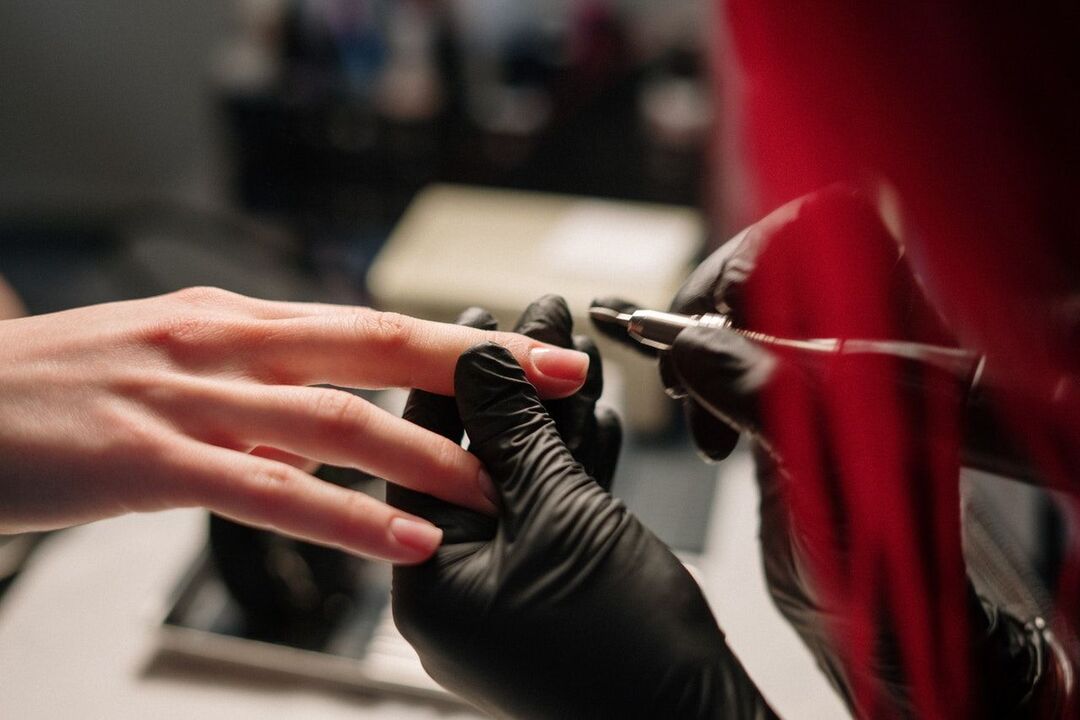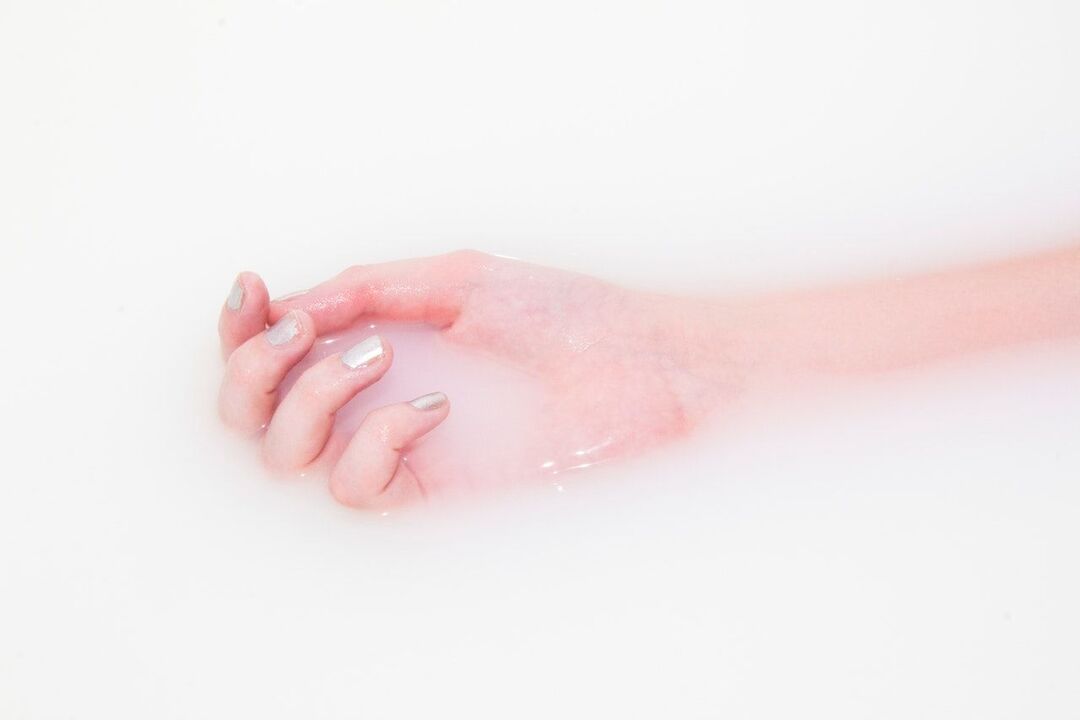
Why does the fungus appear on the nails? What are the symptoms of the disease? This disease destroys the nail plate and causes many problems. Our medical experts answered frequently asked questions and told how to quickly treat with effective drugs.
According to statistics, 20% of the total population of the Earth is susceptible to nail infections caused by parasitic fungi. This condition is called onychomycosis and is caused by the presence of fungus on the nails.
What is onychomycosis?
The disease is contagious, infection occurs from person to person, as well as through contact and household objects. Fungal infection attacks and eats away at the nail plate, destroying the nail.
Nail fungus is most often found in the toenails, because the feet are more sensitive to negative effects. However, the beginning of the development of the pathology occurs with the weakening of the immune system, which leads to a decrease in the body's defense capacity, which does not allow the immune system to be effective enough in the fight against pathogens.
Some types of mycotic infections cause onychomycosis of the hands and feet:
- dermatophytes;
- Yeast;
- moldy;
- trichophytosis;
- microsporia;
- athlete's foot.
All fungal pathogens fall into two broad categories:
- Pathogenic.
- Conditionally pathogenic.
Pathogenic microorganisms are microorganisms that penetrate from outside and harm human life. Conventional pathogens are those that normally live in the skin, mucous and keratinous areas of the human body, for example, fungi of the genus Candida.
Normally, the organism lives symbiotically with opportunistic pathogenic microorganisms. However, with a decrease in immunity and favorable conditions, these organisms begin to develop uncontrollably, which leads to the emergence of a pathological process.
Why does the fungus appear on the nails?
Common causes of mycosis may include:
- weakened immune system;
- accompanying chronic diseases (for example, eczema, diabetes);
- non-observance of personal hygiene rules;
- visiting places where fungal infections are concentrated (bathroom, sauna, swimming pool, public shower, water park);
- wearing closed shoes where the feet sweat a lot;
- old age (natural immunity decreases after the age of 65);
- working conditions (humid environment, high room temperature, radiation, dusty and dirty environments).

In such conditions, nail fungus occurs on the hands and feet. It was noted that the disease is distributed by gender - men suffer almost 3 times more than women.
How does the pathogen penetrate the nail plate?
The keratin plate itself is not susceptible to the penetration of mycotic pathogens. For an infection to begin to develop, its integrity must be compromised. There are three main ways of entry of mycotic organisms:
- Through the nail plate due to injury and damage to the keratin layer;
- Through the subungual notch;
- Through the proximal nail bed.
Conditionally pathogenic organisms often cause inflammation of the cuticle.
What are the types of onychomycosis?
The disease comes in three types or stages, each varying in severity:
- Normotrophic type. Yellowish-gray thin strips appear on the nail plate, brittleness and fragility appear, but thickening and subungual hyperkeratosis do not occur.
- Hypertrophic type. It appears when there is no treatment or when it is wrongly selected and ineffective. First of all, after successful treatment, the phenomenon of subungual hyperkeratosis occurs, which leads to long-lasting thickening.
- Atrophic type. The most difficult stage of the disease. The nail becomes thinner, brittle and fragile, changes its color to dark gray-brown, over time, its growth is disrupted and complete separation from the nail bed occurs.
Finding the type of disease will allow you to decide how to treat nail fungus.
What are the symptoms of onychomycosis?
Symptoms of a fungal infection:
- the appearance of light yellow or gray stripes and spots on the nail plate, which makes its appearance painful;
- a change in the color of the plate to yellow, brown and brown, turning black over time;
- cuticle and proximal ridge become inflamed;
- the plate thickens and becomes brittle, fragile, broken;
- a characteristic special smell appears;
- Over time, the nail plate completely peels off.
How to diagnose the disease?
Color changes, roughness and chips can help to suspect onychomycosis. However, similar symptoms are characteristic of many other diseases (eg, eczema, psoriasis, lichen planus). Therefore, a doctor's examination is not enough.
You should contact a dermatologist, podiatrist or mycologist with this problem. If it is difficult to distinguish the cause of the disease, you should contact a general practitioner or family doctor, who will refer you to a specialist. You should consult a surgeon to adjust the treatment.
When making a diagnosis, it is necessary to check the mycotic origin of the infection. For this, a microscopic examination of keratin thickening is performed. But to determine the type of pathogen, it is necessary to make a bacterial culture for analysis.
How to treat nail fungus?
Treatment is a long process, lasting from several months to a year, and requires significant effort from the patient.

Antifungal therapy depends on the route of exposure to the affected area and can be:
- local - the use of only local ointments and creams that affect the pathogen at the site of the lesion;
- systemic - the use of systemic oral antifungal drugs, which is necessary when the infection penetrates the affected area with the bloodstream;
- combined - a combination of local and systemic therapy that gives the best results.
Systemic preparations containing the following substances are used as the most effective means for nail fungus:
- substance ketoconazole— the effectiveness of treatment with this tool is achieved in half of the cases, the approximate course is from 8 to 12 months;
- substance itraconazoleIt is a popular antifungal drug that is effective in 85% of cases. Its clear advantage is a short course of treatment - only 10 days;
- substance terbinafine hydrochloride- One of the best tools that helps in 90% of cases. The course of treatment lasts up to 4 months for onychomycosis on the hands, and up to 6 months on the feet. However, the appearance changed by mycosis can last for a long time - up to 50 weeks.
Systemic therapy is used in moderate or more severe cases. Usually, oral antimycotics are combined with the use of topical ointments. However, systemic agents have a number of side effects and can be toxic. Therefore, their use is not recommended for pregnant and lactating women, as well as for people with chronic metabolic and liver diseases.
Local remedies in the form of creams and ointments do not have a toxic effect, but are treated only in mild cases - when only ⅓ of the nail plate is changed and the pathogen does not penetrate deep into the keratin tissue. This is due to the inability of local products to penetrate deeply into the keratin layer.
In mild cases, when treatment is started on time, systemic agents can be abandoned. However, with an advanced clinical picture, sometimes it is necessary to get rid of the damaged area surgically, and only after that, local therapy is carried out. Removal is painless and leads to complete recovery with subsequent antifungal treatment.























